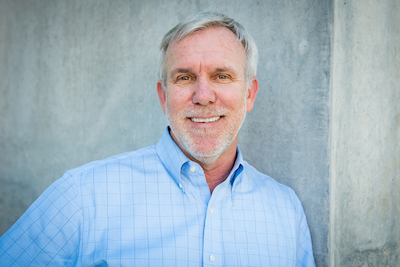By Tim Keck
When I started teaching workplace violence prevention in 1995, I was one of very few nationwide who were doing it. I started because my police department had been the victim of a workplace shooting when a local bad guy committed a double murder, kidnapped his ex-wife, and walked in the station’s front door in small-town Arkansas. When my friend Ray stood up to say, “May I help you?” the bad guy shot him three times and took over the building.
That was a very long night.
In the aftermath, I asked myself two questions. The first was, how did we let this happen? The answer is that we believed the myth that nothing like that would ever happen to us. Sound familiar?
Statistically, we were right. The likelihood of someone committing murder and then taking over the police building was extremely low. Yet, it happened. You see, no one thinks something will happen to them until it is happening to them. At that point, the statistics aren’t much comfort.
The second question I asked myself was whether anyone out there understood how to prevent target violence. The answer was yes. The premier group in that regard is the United States Secret Service. The sad fact is that there are thousands of people who would assassinate the president, no matter who he is, on any given day. Yet when was the last actual attempt? Reagan in 1981.
Because the method used by the Secret Service works.
They use a methodology known as Threat Assessment and Management, which isn’t about sidearms and sunglasses. It’s about learning the warning signs of violence, watching for them to appear, then working in partnership to de-escalate the situation and keep everyone safe.
The entire point is prevention.
So why does all active shooter training begin when the bad guy arrives with a weapon?
Everything from A.L.I.C.E. to Avoid, Deny, Defend to Run, Hide, Fight (RHF) begins when the bad guy shows up with a gun. But what if the bad guy never showed up with a gun in the first place? It seems like that would be better.
Well, I have good news. What works for the Secret Service can work for us too.
For years, we have been working with organizations nationwide to set up full-fledged Threat Assessment and Management (TAM) programs to keep their people safe. Here is what that consists of:
- Develop a defensible policy.
- Construct a practical plan.
- Train everyone on the policy and the plan.
- Training includes:
- Warning signs of violence for everyone.
- In-depth training for leaders/HR/Safety/Security due to their critical role.
- Worst-case scenario mitigation and defense just in case.
Of course, the real question is whether it is effective.
I have been managing threats against people and organizations for over twenty-five years. Here is my personal track record, along with that of the organization I’m affiliated with, SafeHaven Security Group,
One hundred percent effective.
In other words, once we have begun managing a situation, we haven’t had one, not one, that resulted in violence. That’s hundreds of cases all over the nation. In every instance, we have kept the target from becoming a victim.
Yet, we still plan for the worst. Because it is unrealistic to believe we can prevent all violence, we still train clients on what to do if the bad guy shows up with a gun, just in case.
That training goes far beyond RHF.
Our training is based on solid principles developed by neuroscience and proven effective by Tier 1 operators like Navy Seals. It recognizes that telling someone to do something they can’t physically do is programming them to fail. Let me break that down.
RUN
Seems like solid advice at the outset. But how many Americans “run?” Like really run. A fast sprint as hard as they can go. I’ve been asking that question in seminars for years, and very few hands go up.
Do you know what happens when your brain tells your legs to “run,” but you haven’t sprinted since 1996? You run about ten feet and fall. Now how easy are you to shoot?
Instead, we teach them to evacuate. If you can run, run. If you can walk, walk. If you’re in a wheelchair, wheel. I know it seems like semantics, but the truth of how the brain stores information and then recalls it under stress proves it is far more.
HIDE
It feels like a good option until you consider how people respond under stress. When you train people to hide and show them an image of someone hiding under a table, do you want to guess what they do under the stress of an actual incident? They hide under their desk.
What the heck is that going to do!?!
The desk doesn’t stop bullets, but it does restrict your movement to such a degree that someone trying to kill you would have a hard time missing.
Instead, we teach Lockdown in a secure room. That means a room with a locked door and no glass: a bathroom, a storeroom, an office. If the shooter can’t visually target you, it’s much harder to hit you. Plus, getting through a locked door is far more challenging than anyone realizes. Just stay low and don’t come out until the police arrive.
Note: My motivation for writing this article was after reading the text stream between a receptionist and her husband during a shooting event. She hid under her desk because that was what she knew to do. When the killer walked up and found her there, she didn’t stand a chance.
FIGHT
This is everyone’s worst nightmare. The RHF video addresses it with a warning to fight as if your life depends upon it because it does. We agree. But RHF doesn’t teach any stress-proof principles, tactics, or techniques. Telling someone to fight without any actual instruction on how to fight won’t likely end well.
The fact of the matter is that it is possible to win a gunfight when you don’t have a gun. Almost anyone can do it. And the biggest barrier isn’t a lack of strength, speed, or stamina. It’s a lack of mental preparation.
Which is why we train your brain for success. Then we teach a couple of simple principles through a process called Targeted Kinetics. Then you walk away prepared.
The method of RHF was developed to offer something to the public to help them survive. It was a good start. But we can do better. Let’s take what the Secret Service can teach us about protection and combine it with what we have learned in 40 years of mass shootings. Let’s take Threat Assessment and Management nationwide and save lives.
To learn more about Threat Assessment and Management and how YOU can be the hero and protect your people, visit SafeHavenSecurityGroup.com.

